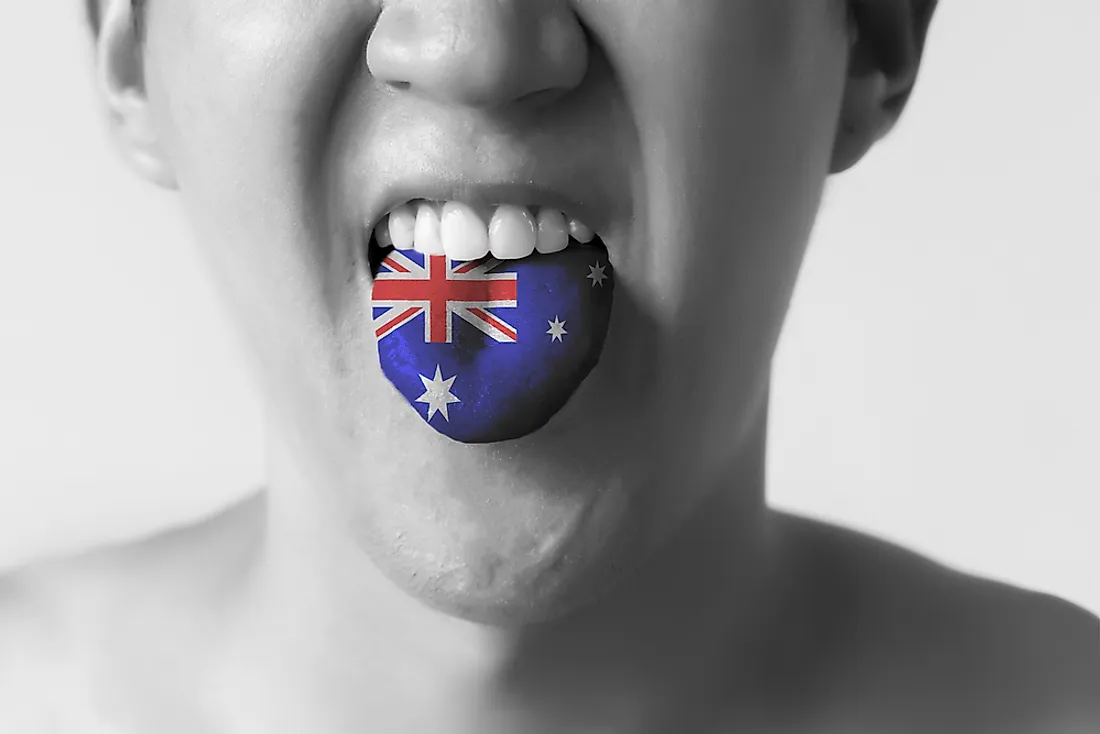What Languages Are Spoken In Australia?

Though Australia has no official language, English is regarded as the de facto national language. Even so, Australia is a linguistically and culturally diverse country with influences from more than 160 spoken languages.
Australian English has a unique accent and vocabulary. Collectively, Australians have more than 200 spoken languages. In the 2011 census, 76.8% Australian spoke English at home. Mandarin is the biggest non-English dialect spoken in Australia. Immigration patterns have had a significant influence on the most widely spoken language in the country other than English. Early European settlement in Australia almost eradicated the indigenous languages, and few of these aboriginal languages have survived today.
National Statistics Of Languages Spoken In Australia
The 2011 analysis of language spoken at home indicate that majority of Australians speak English only as compared to non-English Speakers. Overall about 76.8% of the people speak English only, 18.2% are non-English speakers. Apart from English, Mandarin is the dominant language spoken at home by 1.6% (336,178 people) speakers. Other emerging languages include Punjabi, Filipino/Tagalog, and Arabic. Sydney, Australia’s most multicultural city records about 30% of the population, do not speak the English language at home. Sydney and Melbourne house more than 65% of non-English migrants who in general speak some 240 foreign languages. Many immigrants use their mother tongue and have smattering English. As a result, about 1 million migrants cannot speak English which is a huge number especially in a country of about 20 million people out of which 15% (3 million) residents speak a second language at home.
English
Australian English and British English are similar, but the former has a colorful vernacular called “strine” thrown in for good measure. Strine or Ozspeak is the country’s greatest creative product characterized by- abbreviations, profanities, and hyperboles, word-tweaking and vulgar expressions. Strine is a slang which originated from the early convicts of Cockney (London) and Ireland. It then developed as a rebellious subculture. Nevertheless, the uses of strine and slang words vary from state to state. Also, the Australian English comprises of many words with an Aboriginal descent. Since the people cannot decide on which English to use, misspellings such as labor/labour and Program/programme abound. Besides, many words used every day in the country have different meanings to Australian unlike other English-speaking countries around the world. For example, Crook means ill, game (brave), ring (top performer), shout (round of drinks), tube (can of beer), and globe (light bulb). Everything is abbreviated in Australia. Some words have the vowel e, or o added as seen in derro (derelict), reffo (refugee), and Garbo (dustman). Others have a suffix (I, ie, or y) such as in Aussie (Australian), Barbie (barbecue), Chrissy (Christmas), footy (football), mozzie (mosquito), and cossie (swimming costume).
Aboriginal Languages Spoken In Australia
Australian Aboriginal community has the longest cultural history in the world and dates back to around 60,000 years. By the time the First European Fleet arrived in the country in 1788, Australia had around 250 indigenous languages. These languages are believed to have originated and evolved from a single language family which comprised of 700 dialects. Out of those 250, only 20 survive today, and they are spoken regularly and also taught in schools. The most common aboriginal language is Kriol which contains many English words with different meanings and usually spelled in a phonetic style.
Tasmania or Palawa Languages Of Australia
Tasmania languages were the indigenous language of Tasmania Island. Based on short wordlists, Tasmanian had five to six tongues. Some records indicate that the six languages were not mutually comprehendible hence a lingua franca became a necessity. It is unknown if the lingua franca was a Creole, Koinem, Pidgin, or a mixed language. The last record of this language as a means of communication was the 1830s, and the last full-blooded Tasmanian died in 1888. The last Tasmanian speaker died in 1905. Today Tasmanian Aborigines speak English.
Torres Strait Island Languages Spoken In Australia
Torre Strait Islanders and the English-based Creole have two indigenous languages; the transitioning agglutinative western-central language and Meriam Mir. The western-central language is known for its dialect names such as Kalau Kawau Ya, Kaiwaligau Ya, Kulkalgau Ya and Kalau lagau Ya. The four dialects are closely related. The western-central dialect has masculine and feminine genders but no neuter gender. This language belongs to the Pama-Nyungan language family which covers most of the country. Meriam Mir, the eastern Torres Straight language is a Papuan dialect related to Papua New Guinea languages. Meriam Mir had two dialects, Meriam Mir and Erubim Mir. The Eastern Torres Strait language is the only Papuan dialect native to Australia. Creole which developed in the 1880s is considered an indigenous language of Torres Straits and has five dialects- Cape York, Eastern, Papuan, TI, and Western Central. Australian Creole is a mixture of English, Aboriginal languages, and other dialects. The tongue is a pidgin language which developed as a primary language of a community. Brokan language is non-typical Pacific English Creole.
Minority Languages Of Australia
Other minority languages spoken in the country include Italian spoken by 1.4% of the population, Arabic spoken by 1.3% of the population, Greek spoken by 1.3% and Cantonese spoken by 1.2% of the population. There are also the Auslan Yolŋu Sign Language and other Aboriginal sign languages in the country.
What Languages Are Spoken In Australia?
| Rank | Category | Languages |
|---|---|---|
| 1 | Main languages | Australian English (80%) |
| 2 | Indigenous languages | Tasmanian languages, Australian Aboriginal languages, Torres Strait Island languages |
| 3 | Minority languages | Mandarin Chinese (1.6%) Italian (1.4%), Arabic (1.3%), Greek (1.3%), Cantonese (1.2%) |
| 4 | Sign languages | Auslan Yolŋu Sign Language and other Aboriginal sign languages |











